#eusmilus
Text

Eusmilus, or eusmilace?
#wormsandbones#homemade horrors#eusmilus#sabertooth#paleoart#art doll#artdoll#handmade#poseable art doll#ooak#custom made#skull#plush#ace pride
283 notes
·
View notes
Text

A Closer Look at Prehistoric Mammals. Written by Beverly Halstead. Illustrated by Peter Barrett, Giovanni Caselli, and Richard Orr. 1976.
The Dinictis, interestingly, has been mislabeled as the late Devonian armored fish, Dinichthys.
2K notes
·
View notes
Text

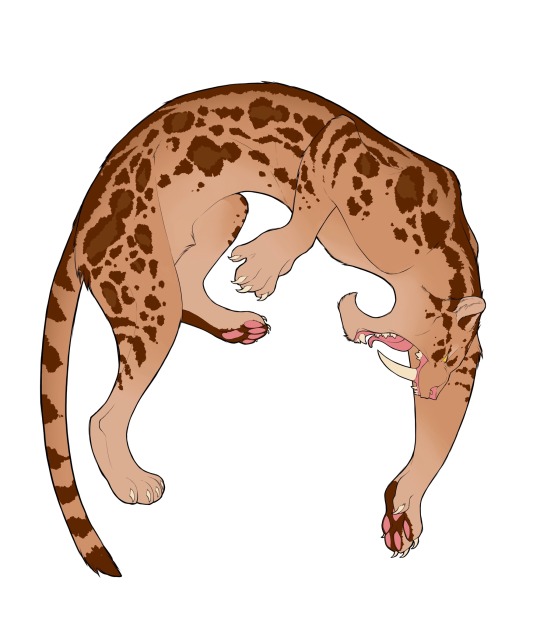
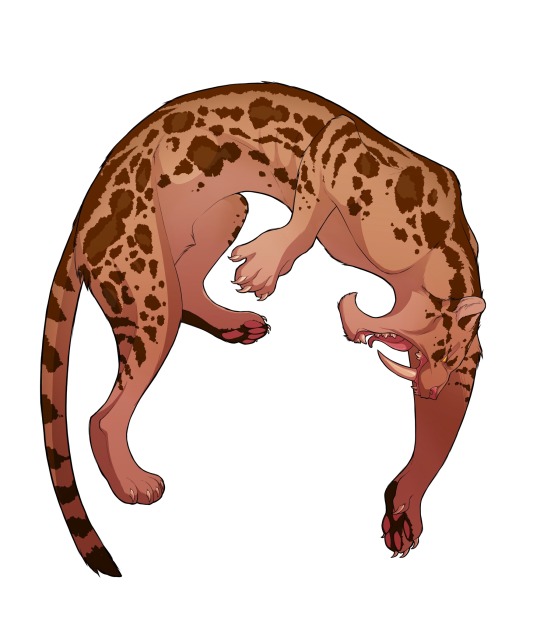
sicarus
11 notes
·
View notes
Text
On Smilodon mouth tissue
Keep in mind through this entire post that this is pretty rough and I don't specifically study sabercats. But we might as well take a closer look at the controversial Smilodon lip and gum tissue and see what it'd look like step-by-step. Let's start with a Smilodon skull (real fossil, not cast) with articulated sabers. Keep in mind the tip of this saber is broken off.
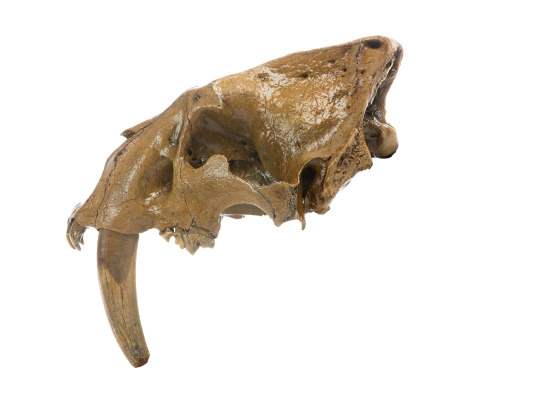
You can pretty clearly see the division between the enamel-covered portion of the teeth and the cementum. In modern felids, this cementoenamel junction is roughly where the gum line ends, and this is also what Riviere and Wheeler 2005 concluded for Smilodon. So if we take that and apply a gumline to this skull, it looks like this:

Now that looks like a pretty deep gumline! The full canines of Smilodon don't necessarily need to be covered by lips; even though they are covered by enamel, it's a very thin coating that doesn't require extensive hydration. This is also the case with the fangs of musk deer and Chinese water deer, who have their canines hanging on the outside of the mouth. These fanged deer, as well as tusked synapsids like walruses and Tiarajudens, have canines that project far beyond the bottom of the lower jaw (see below for the alternative) - and none have the massive bloodhound lips you may see around for Smilodon.

The gums, however, would need to be hydrated and covered by the lips. So that pink line could be an indicator of the minimum extent of the lip margin. But what I notice about these gumline comparisons is that we're looking only at the skull. If you bring in Smilodon's mandible and articulate it so that the mouth is closed...
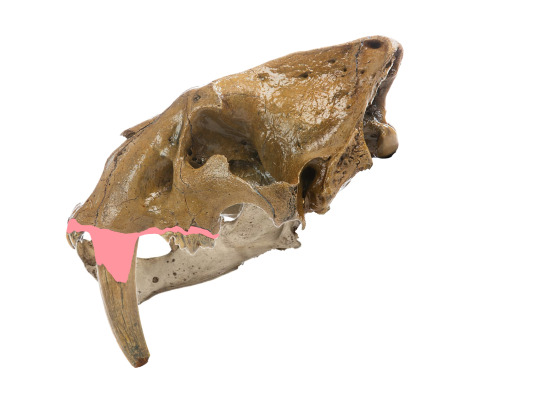
The gumline doesn't go below the margin of the lower jaw. So the upper lips would not need to droop beyond the margin of the lower jaw. And as discussed above, the rest of the canines wouldn't necessarily need to be covered. Goodbye bloodhound Smilodon. This is consistent with how the lips do not droop beyond the margin of the mandible in any "saber-toothed" animal. Fanged deer and walruses have exposed canines. Clouded leopards keep their impressively-sized canines in the mouth; while the lips are relatively big, they don't droop over the lower jaw...
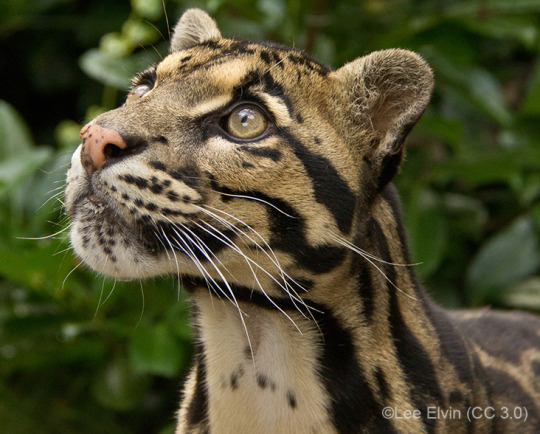
And saber-toothed animals that aren't smilodontines - including other true sabercats like Homotherium - don't actually have teeth that project beyond the bottom of the lower jaw (accounting for tooth slippage). Most of them have a deepened "chin" that follows the sabers. So it's possible, if not likely, that these animals simply had sabers covered by the soft tissue of the lower jaw when the mouth was closed. That would keep the teeth and gums moist regardless of how far down the gums went. Even if the teeth were exposed, the upper lips still wouldn't need to go very far down to keep the gums moist (you can see where the cementoenamel joint is on the Eusmilus skull replica in the lower right).

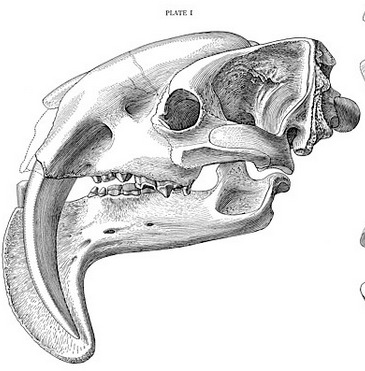

(top: Homotherium; bottom left, Thylacosmilus)
Now let's take the rigorous reconstruction of Smilodon from Turner et al. 2011 - and overlay it over the image above, to see if "traditional" Smilodon lips would cover all of this expanded gumline or not.

That looks like a pretty close match, I'd say! Being generous (and looking at clouded leopards as a very rough guide), I can see the margin of the upper lip maybe going like this. Lippier than usually pictured, but not shockingly so.

So not much would change.
Now, why would Smilodon need such deep gums? Simple - the longer a tooth is, the easier it is to break off. So more extensive gum tissue would help stabilize the sabers in the mouth. Which makes sense. The current model for sabercat predation is that they would subdue prey using their beefy muscled forelimbs, and only use the sabers at the end for the killing neck-puncturing bite. Don't wanna break them beforehand.
115 notes
·
View notes
Text
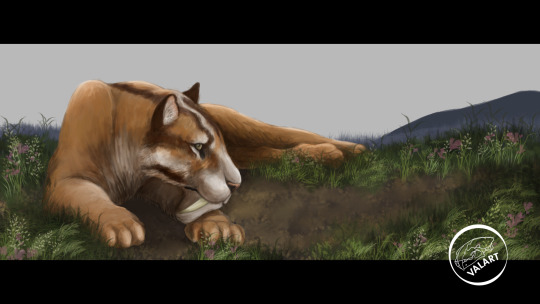
Eusmilus lying peacefully in the meadow
53 notes
·
View notes
Text
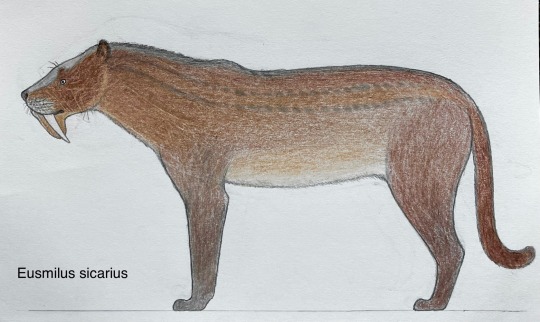
After finding an illustration of the Eusmilus sicarius holotype skull online, I decided to sketch it out. Color/pattern partially inspired by Masked Palm Civets and Mauricio Anton’s Eusmilus bidentatus illustration.
3 notes
·
View notes
Text

assorted saber-toothed and false-saber-toothed mammal cast skulls (Eusmilus sp., Dinictis squalidens, Thylacosmilus atrox, Xenosmilus sp.). museum of ancient life at thanksgiving point
1 note
·
View note
Photo
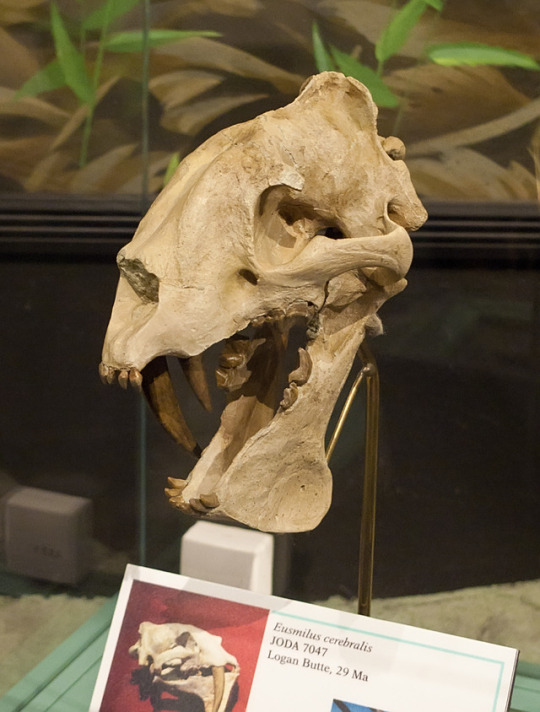
Eusmilus cerebralis skull.
#Eusmilus#Eusmilus cerebralis#Feline#Prehistoric#Oligocene#Extinct#Skull#Thomas Condon Paleontology Center#Museum
29 notes
·
View notes
Text
Happy National Dinosaur Day!

Dinosaurs vs Beasts
by arvalis on DeviantArt
Bottom from l to r: Eusmilus, Dilophosaurus, Woolly Rhino, Glyptodont, Smilodon, Stegosaurus, Giant Beaver, Megalania, Dire Wolves, European Cave Lion, Deinosuchus
Second row l to r: Giganotosaurus, Giant Short-Faced Bear, Quetzalcoatlus, Deinonychus, Woolly Mammoth, Ceratosaurus, T. Rex
Top row l to r: Argentavis, Spinosaurus, Liopleurodon, Megalodon
3 notes
·
View notes
Text
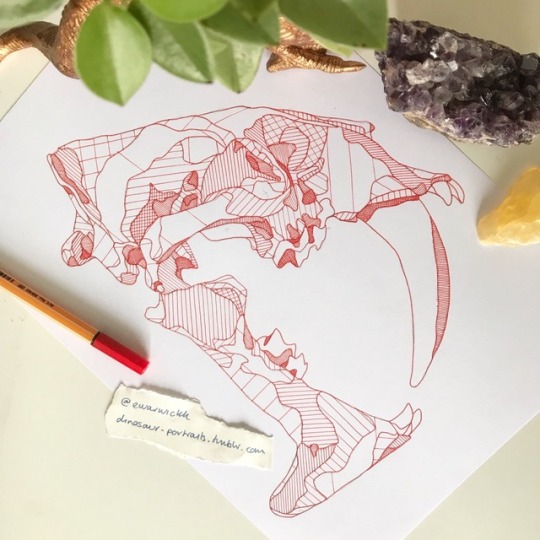
Inktober 21st - Eusmilus
#art#artist#artwork#sketch#skull#design#drawing#dinosaur#dinosaurs#illustration#illustrator#colour#pattern#inktober#inktober 2018#graphic#graphic design#geometric#tattoo#tattoo design#paleoillustration#paleoart#palaeontology#jurassic world#jurassic park#eusmilus#sabretooth
58 notes
·
View notes
Link
0 notes
Photo
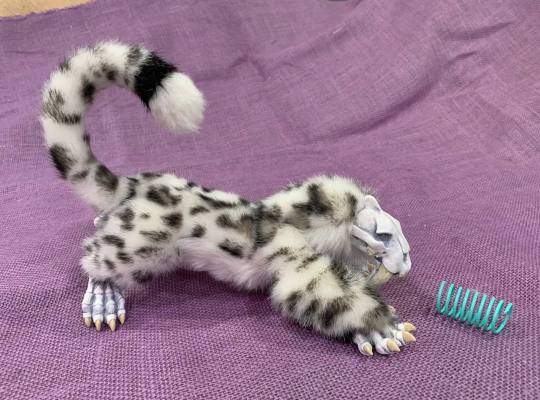
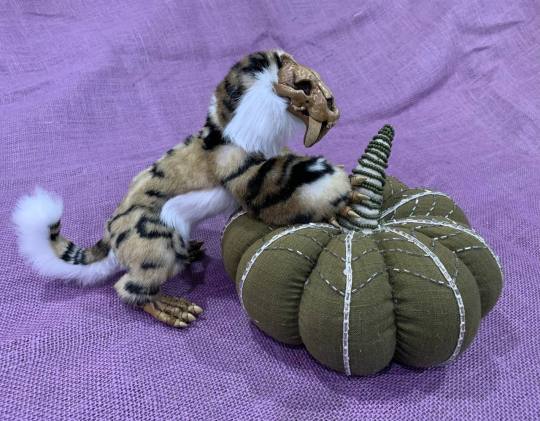



At 8pm EST time tomorrow, these five Eusmilus will be looking for new homes in our shop! Better stock up on cat toys. :)
111 notes
·
View notes
Text
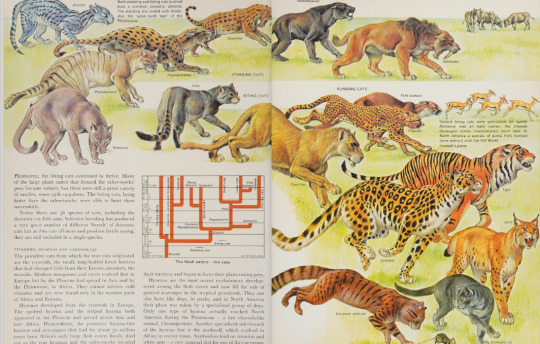
The Evolution of the Mammals. Written by L. B. Halstead. Illustration by Sergio. 1978.
Internet Archive
#prehistoric#prehistoric mammals#felines#dinictis#nimravus#pseudaelurus#hoplophoneus#eusmilus#homotherium#smilodon#cave lions#big cats#cheetahs#tigers#leopards#lynxes#wildcats#european wildcats#cats#Sergio
196 notes
·
View notes
Text
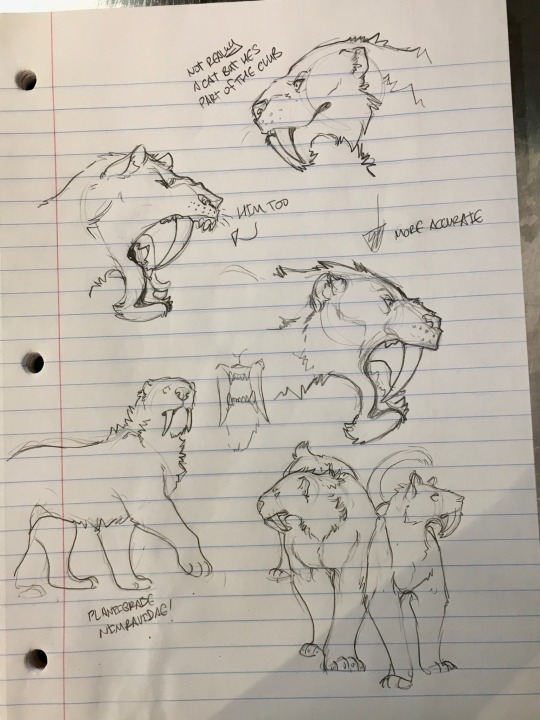
false sabercat studies (their names are barbossa the barbourofelis and utah the eusmilus)
#im literally the funniest person alive fuck you#jordan’s drawing again#eusmilus#barbourofelis#nimravidae
4 notes
·
View notes
Text
The Sea by u/Eusmilus
Have you heard the story old
of the land between the seas?
Have you heard the story old
of those who brought us to our knees?
Have you heard the story, then
of the way in which they fell?
Have you heard the story, then
of their path straight to hell?
OOO-o-Oh
Once a land of ships so grand
With an army not of men
Every soldier fought like ten
Once a land of ships so grand
And remember!
The land that was so vast
And remember!
The might that couldn’t last
And remember!
The old fury of the North
And remember!
How history went forth
And woe!
Woe the Kings of sunken ships!
Woe the kings of sunken ships!
to the dark deep’s frothing lips.
Woe!
They crown the ocean’s floor
Woe!
Now an empire no more
https://www.reddit.com/r/polandball/comments/95v15h/the_sea/
0 notes
Photo

Eusmilus & Entelodon, Mauricio Antón
Nature plays the role of Providence capriciously.
The saber-tooths fed where they’d taken their prey—at the pool’s edge, in the sandy dirt, under the spartan shadows of thirsty-looking trees—gorging on steaks of flank, blood smearing their faces, yawning as the hot sun sailed overhead and the shade slowly slid out from under their feet. Vultures drew circles above them, and green-painted flies hummed in their cat-like faces, flitting between kill and bloody chops, drinking whatever dripped or oozed, but these were easy to ignore. The kill would feed the Eusmilus pair for days. The female was already eying a nearby tree for a pantry.
But, the gargling bellow of the monster hogs stopped their feeding. After introducing themselves, the pig-things strolled out of the plain, flashing fangs, wagging heads, tails lifted high. The saber-tooths crouched, unsure. The female snarled, made a motion like she was going to pounce, but the entelodonts were unimpressed; they marched right up to the carcass as if the saber-tooths weren’t even there. The nimravids’ protests drowned in the weird brays of the pig-things. The entelodonts were not afraid. The dark truth was that if the saber-tooths didn’t run, they would be unceremoniously crushed in ugly jaws along with their half-eaten prey.
There was only one option. The Eusmilus pair splashed through the shallows, half in hurry, half in shame, then trotted across the dry clay, dripping, close-lipped as if they didn’t care. Their possessive instinct berated them, but their survival instinct was louder. They did not look back to see the marauders wrench their kill apart, but it was impossible to shut out the noise: the chomps and snorts, bone crunching and tendon snapping—the sickening sounds of unearned feeding.
#paleontology#eusmilus#entelodon#entelodont#nimravid#false saber-toothed cat#paleogene#mauricio anton#mauricio antón
65 notes
·
View notes